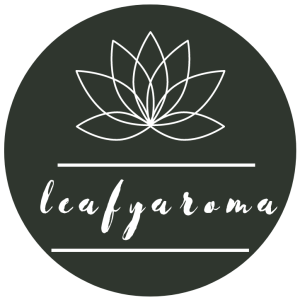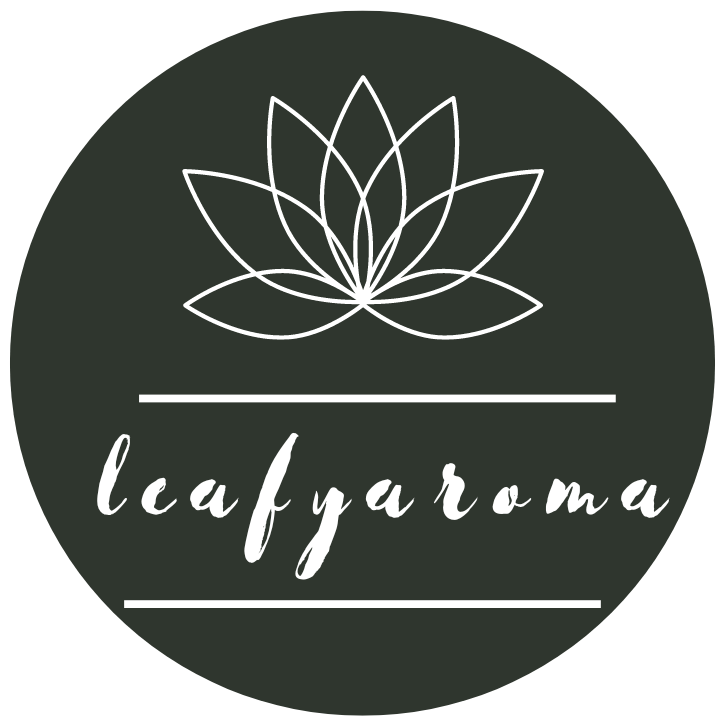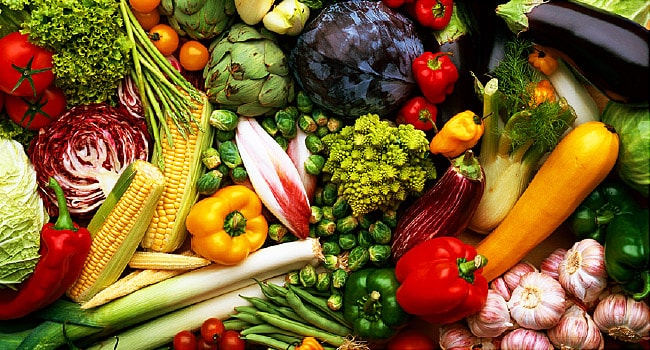Healing Phase Diet is to promote the healing process, speed up the recovery rate in the body and helps to reverse health conditions. It is effective in almost every disease that exists in human life. It also improves life quality in genetic disorders.
It stops inflammation in the body. So, it is effective in all diseases in which inflammation is present.
It releases accumulated toxins from the body, so it is useful in digestive ailments. It is the right choice for lifestyle disorders.
It stimulates liver function, improves kidney health, boosts memory, enhances cognitive functions, and gives you clarity of mind.
Prerequisite
Before you incorporate the Healing Phase Diet in your life, you need to undergo Fasting for Healing. How to fast for healing, you can find more details in this article: Fasting for Healing.
Healing Phase Diet Rules
Here are the basic rules of the Healing Phase Diet (Phase 1):
- Plant-Only Food: Eat all food from plant-based sources and choose 100% plant-based sattvic food. Learn more: Sattvic Food. Choose a variety of fruits and vegetables from their different categories and groups.
- Food Groups: Eat only Fruits, Berries, Non-starchy Vegetables, Green Leafy Vegetables, Fresh Green Herbs, Mung Sprouts and Sunlight. During this phase, avoid starchy vegetables, legumes (except mung sprouts, edamame, fresh green pea and green beans).
- Fresh, Raw & Uncooked (No Cooking): Eat fresh, seasonal, unprocessed, and locally available plant-only food. It should be uncooked and in the natural form with the full of vitality and livingness. Avoid heating, boiling, and cooking food during this phase.
- Eat More Fresh Herbs: Fresh green herbs have potent healing benefits. Therefore, we recommend increasing the amount of these herbs than recommended in the dietary guidelines. If you follow this diet plan, you should eat fresh herbs in the recommended amount given in this article.
- Minimal Processing (Cut, Chop, Dice, Blend, Grind): You can cut, dice, chop, or grind to make paste, puree, or smoothie. You can also blend vegetables and fruits in a blender to make smoothies or use a food processor for making it easy for chewing but consume within 45 minutes after this type of processing of fresh food.
- Sunlight: We also consider sunlight as food. Because it helps in reactivating antioxidants, e.g., CoQ10 (in combination with greens – chlorophyll) and vitamin D formation in the body. It also has healing benefits. Take sunbath for 30-45 minutes daily. Expose both sides of your body – front and back each for 15 minutes. Exposing the whole body to sunlight is recommended. If it is not possible, expose at least 60% of your body to sunlight. You can wear white cotton clothes/shorts while taking a sunbath.
- 8-10 Hours Eating Window: Eat your food at a fixed time and within an 8-10 hours eating window. The eating window should be 8 to 10 hours and between 7:00 am to 7:00 pm. Do not eat and drink anything after 7:00 pm. Also, avoid the water after 7:00 pm unless you have a strong thirst. The appetite rule applies if you feel appetite outside the eating window.
- Appetite Rule: Do not suppress appetite. You can eat regardless of the time if you are hungry. If you feel an appetite, you can eat fresh fruits and non-starchy vegetables (uncooked and raw) as much as it satisfies your hunger. If the time frame is between 7:00 am to 7:00 pm, you can eat fresh fruits and non-starchy vegetables. If the time frame is between 7:00 pm to 7:00 am, you should only eat non-starchy vegetables. During this period, you should not eat fruits.
- Eat More: You can eat more than the recommended amount according to your appetite. But you should not eat less than the recommended amount during this phase, even if you have a low appetite.
- Chew Well: Be watchful while chewing, enjoy chewing, and feel the taste with each chew. Chew with a calm mind. Do not be in a hurry. Meditate on eating. Make chewing a meditation. If you are using dentures or having difficulty in chewing, then put food in a food processor or blender to make its paste/puree. Eat the paste or drink puree or smoothie. You can also add some water for easier consumption.
- Limit Nuts: Avoid nuts during this phase except for walnuts and almonds. You can eat 2 soaked walnuts and 5 soaked almonds daily.
- Limit Avocado: You can take avocado twice a week. But eat within an appropriate amount that does not suppress the appetite and cause heaviness in the abdomen. The total avocado intake should not exceed 300 grams per week.
- Limit Coconut: Coconut is limited to up to 2 servings per week. One serving size for fresh coconut is 150 grams, and dry or desiccated coconut is 30 grams. There is no limit applies to coconut water. You can drink coconut water in an appropriate amount that does not suppress appetite and cause heaviness in the abdomen.
- No Supplement: During this phase, you should not take any supplement, including Vitamin B12 unless recommended by your health care provider. You should start the Vitamin B12 supplement in the Stablizing Phase Diet.
- No Oil and Fats: Do not use oils and fats in any form during this phase. You can use oils for external applications, e.g., oil massage.
- No Salt: Do not take salt during this phase. Use healing spices for making food tastier instead of salt. Healing spices include Black Pepper, Cinnamon, Cumin Seeds, Ginger (fresh), Green Cardamon, Long Pepper, and Turmeric. It is optional during this phase.
- No Added Sugar & Sweetener: You should not take added sugar and sweeteners. Alternatively, you can eat fruits. Also, avoid all artificial sweeteners.
- No Processed Food: Avoid all types of processed food, e.g. packed fruit juice, fruit jam, jellies, fruit cake, canned fruits, canned vegetables, salted or roasted nuts, cookies, biscuits, etc.
- No Extracts: Extracted means an individual component of a specific food is extracted to form a food, e.g., curcumin from turmeric.
- No Animal Food: Avoid all animal foods, including eggs, meat, fish, and all dairy products.
- Fasting: Fasting is a prerequisite to the Healing Phase Diet. Keep one-day full water fast every week. Follow the instructions given in this article: Fasting for Healing.
- Exercise: Exercise for at least 30 minutes a day. The maximum recommendation is 90 minutes a day. Stop doing exercise if you feel exhausted and get excessive perspiration (even before 30 minutes).
- Massage: You should have a full-body massage (with oil) once a week.
- Gratitude meditation: Gratitude meditation is to express your gratitude and thankfulness to Nature. When you are doing this, you should have a smile on your face and a feeling of happiness inside. You should do it immediately after waking up in the morning, before and after eating food.
- Breathing meditation: Watch your breathing – inhale and exhale, with closed eyes and feeling of happiness and smile on the face. Just watch, do not entangle with it. Watching is key. Do it 2-3 minutes immediately after waking up, 20 minutes in the morning after getting a shower, and 15 minutes before sleeping at bedtime.
- Herbal Medicine: Use herbs for treating diseases. Herbs also should be in their natural form – fresh or powdered (churna). Do not take Herbal extract, essential oils, or any extracted phytochemicals. For example, take turmeric instead of curcumin. You should take herbal medicines when you are following healing diets whenever possible. No allopathic medicine works well with a healing diet. For example, if you are taking antidiabetic medicines, they can cause hypoglycemia. Therefore, it is necessary to monitor your health regularly and adjust the dosage accordingly. You should consult your doctor to change or stop medicines. You may not stop all medicines immediately. You may have to taper the dosage before stopping any medicine. Sometimes, you may have to take your current medications for a longer duration. Monitor your health and consult your doctor for any change in medicine.
Recommended Timings
In this phase, you can eat in the following way:
| Timings | Food Types |
| 8:00 AM | Vegetable Juice |
| 10:00 AM | Fruits (from Group 1 or 2) |
| 1:00 PM (Lunch Plate) | Salad + Fresh Herbs + Soaked Seeds + Healing Legumes |
| 4:00 PM | Fruits (from Group 3 or 4) |
| 6:00 PM (Dinner Plate) | Salad + Fresh Herbs + 2 Soaked Walnuts + 5 Soaked Almonds |
- These timings are for illustration purposes. You can choose a fixed time according to your convenience and daily schedule.
- You should eat everything in an 8-10 hours’ window. For example, start breakfast at 8:00 am by drinking vegetable juice and stop eating by taking the last meal (dinner) at 6:00 pm.
Let’s discuss what should you eat and how much do you need in a day.
Early Morning (Vegetable Juice)
Start your day with freshly squeezed vegetable juice. You can include juice from any seasonal vegetable.
Recommended Time
| 8:00 AM | Vegetable Juice |
Principles
- Freshly Squeezed Juice: You should drink freshly squeezed juice from any seasonal vegetable. The most important thing is to choose from local and seasonal vegetables whenever possible.
- Variety: Do not drink juice squeezed from the same vegetable every day. Variety is key to the Healing Phase Diet to get maximum nutrients and healing benefits. Use different vegetables every day.
- Vegetables: Use non-starchy vegetables, green leaves, fresh herbs and bio-enhancers for making juice. In the case of children, you can also use the recommended fruits for squeezing juice.
- Single Main Ingredient: Mixing is not strictly prohibited. But use only one vegetable as the main ingredient. You can add bio-enhancers, a taste enhancer, ginger juice, lemon juice and other vegetables. Lemon juice should not be added to tomatoes and cucumber juice. Juice from some vegetables is not suitable to drink in the recommended amount. In such a case, you can mix it with other vegetables. Generally, these vegetables include bell peppers and leafy greens.
- Sipping: You should drink freshly squeezed juice immediately but sip by sip as you are eating them. Do not gulp it down into your gut. Taste each sip of juice.
Recommended & Restricted Vegetables
| Category | Recommended | Restricted |
| Non-starchy vegetables | Any seasonal vegetables – Ash Gourd, Asparagus, Beetroot, Bell Pepper (red, yellow, orange), Bottle Gourd, Broccoli, Brussels sprouts, Cabbage, Carrots, Celeriac root, Cucumber, Drumsticks, Radish, Snake Cucumber, Tomatoes, Turnip, etc. | All types of Potatoes, Yam, Zucchini, all types of Pumpkin, all types of Squash, Onion, Garlic, Shallot |
| Leafy Green | Bok choy, Celery, Collard greens, Coriander, Dandelion, Drumstick, Fennel green, Guava leaves, Kale, Lettuce, Moringa, Parsley, Watercress, Wheatgrass, etc. | Swiss chard (red, green), Spinach, Rhubarb, Beet greens, Mustard Leaves |
| Fresh Herbs | All types of Basil, All types of Mint and Coriander | – |
| Bioenhancers | Ginger juice, black pepper, long pepper, dried ginger powder, Trikatu, or cinnamon | – |
| Fruits | Pomegranate, Apple, Pear, Guava, Plum, Sweet lime (Mosmi), Coconut Water | All other fruits. |
Some vegetables are not suitable for making juice. For example, spinach has high oxalate content, which blocks calcium absorption. However, it is healthy to eat a whole, but not suitable for juicing.
Bioenhancers: Adding a pinch of bio-enhancers is recommended but not necessary. If you use fresh ginger juice, you can add up to ½ to 1 teaspoon in 175 ml of juice. For all other bio-enhancers, just add a pinch of their dry powder.
How much do you need to drink?
You need to decide the quantity according to your age group:
| Age Group | Minimum Amount |
| 1-2 ** | 30 ml |
| 2-3 ** | 40 ml |
| 4-8 ** | 60 ml |
| 9-11 | 100 ml |
| 12-13 | 125 ml |
| 14-18 | 160 ml |
| 19-50 | 175 ml |
| 51-70 | 160 ml |
| 70+ | 125 ml |
| Pregnant ** | 125 ml |
| Lactating ** | 125 ml |
Note: You can drink more as per your tolerance. The minimum amount is the required amount to get healing benefits.
Mid-Morning (Fruits)
During the healing phase diet, you should choose 3-4 fruits daily. Group 1 fruits are an essential category. You should have at least 1 serving from group-1 daily during the Healing Phase Diet. Check Fruit Groups in Fruit’s Guide.
Recommended Time: 10:00 am.
| Age Group (in years) | Recommended Servings |
| 1-2 ** | 2/3 Serving |
| 2-3 ** | 1 Serving |
| 4-8 ** | 1 ¼ Serving |
| 9-11 | 1 ½ Serving |
| 12-13 | 2 Servings |
| 14-18 | 3 Servings |
| 19-50 | 3 Servings |
| 51-70 | 3 Servings |
| 70+ | 3 Servings |
| Pregnant ** | 3 Servings |
| Lactating ** | 3 Servings |
Standard Serving Size for Fruits
| Fruit Form | 1 Serving Size equal to: |
| Fresh Fruits (except berries) | 150 grams |
| Fresh or Frozen Berries | 75 grams |
| Dried Berries | 50 grams |
| Dried Fruits (dried apricots, dates, prunes, figs, raisins) | 30 grams |
| Dehydrated Fruit Pulp | 30 grams |
Note:
- The above table recommends a minimum amount. You should eat more whenever you feel hunger.
- Avoid fruit juice and smoothies during this phase.
Lunch
In the Healing Phase Diet, you should only take non-starchy raw vegetables, fresh green herbs, healing legumes and soaked seeds. In this phase, fresh green herbs are very important and should be taken in a higher dosage.
Recommended Timings: 1:00 PM.
Food Groups
| Food Group | General Recommendation |
| Cruciferous Vegetables | 20% of the total recommended vegetables for lunch |
| Fruiting Vegetables | 20% of the total recommended vegetables for lunch |
| Leafy Greens and Petiole Vegetables | 20% of the total recommended vegetables for lunch |
| Marrow Vegetables | 20% of the total recommended vegetables for lunch |
| Root & Stem Vegetables | 20% of the total recommended vegetables for lunch |
| Fresh Green Herbs (Coriander, Mint and Basil) | As recommended acc. to age |
| Healing Legumes (Edamame, Mung Sprouts and Fresh Green Peas). | As recommended acc. to age |
| Soaked Seeds | As recommended acc. to age |
Find more details about vegetable categories in Vegetable’s Guide. Learn more about choosing vegetables for salad in the article – Recommended and Restricted Vegetables for Salad.
Healing Legumes
In this phase, you should only eat legumes, which you can eat without cooking. It includes:
- Fresh edamame.
- Mung sprouts.
- Fresh green peas.
We generally recommend mung sprouts.
Choosing Seeds
Sesame seeds are the best remedy for bone, muscles and joints disorders. You can take it twice a day in the divided doses. For treating arthritis, you should take it with 3 grams of Ashwagandha powder.
Recommended Servings for Lunch
You should follow the tables below for the recommended servings:
| Age Group (in years) | Vegetables | Herbs | Legumes | Seeds |
| 9-11 | 1 ½ serving (225 g) | 15 g | 100 g | 1 tbsp. (around 7 g) |
| 12-13 | 2 serving (300 g) | 22.5 g | 125 g | 1 tbsp. (around 7 g) |
| 14-18 | 2 ½ serving (375 g) | 30 g | 150 g | 1 tbsp. (around 7 g) |
| 19-50 | 3 servings (450 g) | 30 g | 150 g | 1 tbsp. (around 7 g) |
| 51-70 | 2 ½ serving (375 g) | 30 g | 125 g | 1 tbsp. (around 7 g) |
| 70+ | 2 servings (300 g) | 30 g | 125 g | 1 tbsp. (around 7 g) |
Note:
- If any vegetable from a specific group is not available, you should adjust the total recommended amount with vegetables from other available groups.
- You can also add fruits to the salad in the case of children. Adults can also add fruits (group 1 and 2 fruits only) to a salad without any issue. Make sure you eat the minimum recommended servings for both fruits and vegetables.
- You can eat more than the recommended amount according to your appetite. But you should not eat less than the recommended amount during this phase.
Evening
In the evening, you can take group 3 or 4 fruits. Check fruit groups here.
Recommended Time: 3:00 pm – 4:00 pm.
| Age Group (in years) | Recommended Servings |
| 1-2 | 1/3 Serving |
| 2-3 | ½ Serving |
| 4-8 | ¾ Serving |
| 9-18 | 1 Serving |
| 19-70 | 2 Servings |
| 70+ | 1 Serving |
| Pregnant | 2 Servings |
| Lactating | 2 Servings |
Standard Serving Size for Fruits: Check above under mid-morning meal or read here – Fruit’s Guide.
Dinner
During the Healing Phase Diet, you should only take raw vegetables, fresh herbs, 5 soaked almonds and 2 walnuts.
Recommended Timings: 6:00 PM.
Food Groups
| Food Group | General Recommendation |
| Cruciferous Vegetables | 20% of the total recommended vegetables for dinner |
| Fruiting Vegetables | 20% of the total recommended vegetables for dinner |
| Leafy Greens and Petiole Vegetables | 20% of the total recommended vegetables for dinner |
| Marrow Vegetables | 20% of the total recommended vegetables for dinner |
| Root & Stem Vegetables | 20% of the total recommended vegetables for dinner |
| Fresh Green Herbs (Coriander, Mint and Basil) | As recommended acc. to age |
| Almonds (8 hours soaked) | 5 almonds |
| Walnuts (8 hours soaked) | 2 walnuts |
Find more details about vegetable categories in Vegetable’s Guide. Learn more about choosing vegetables for salad in the article – Recommended and Restricted Vegetables for Salad.
Recommended Servings for Dinner
You should follow the tables below for the recommended servings:
| Age Group (in years) | Vegetables | Herbs |
| 9-11 | 1 serving (150 g) | 15 g |
| 12-13 | 1 ½ serving (225 g) | 22.5 g |
| 14-18 | 2 serving (300 g) | 30 g |
| 19-50 | 2 ½ serving (375 g) | 30 g |
| 51-70 | 2 serving (300 g) | 30 g |
| 70+ | 1 ½ serving (225 g) | 22.5 g |
Note:
- If you cannot eat the recommended servings of vegetables during lunch and dinner, you can take the servings in 3 sittings. You need to adjust the time for it. For example, you can eat 1/3 vegetables at noon, evening fruits at 3:00 pm, 1/3 vegetables at 5:00 pm and the remaining at 7:00 pm.
- The Healing Phase Diet is not recommended for children under 9 years and pregnant women and lactating mothers.
Duration
You can follow it as long as you get complete relief from a disease or as recommended by us on a case-to-case basis. The duration may vary from 3 days to several weeks. For example, people with high blood pressure may require it for a month. A patient who has skin diseases may need to follow it for a longer duration.
Indications of Healing Phase Diet
The Healing Phase Diet is recommended in all health conditions except as discussed under contraindications. It is incredibly useful in the following conditions:
- Inflammatory Disorders.
- Heart diseases.
- Obesity and its complications.
- Diabetes and its complications (don’t add fruit juice in vegetable juice; reduce fruit intake by 50% of the recommended above; increase vegetable intake by 150% of the recommended above).
- Hypothyroidism.
- Polycystic ovarian syndrome (PCOS).
- Atherosclerosis.
- Stroke.
- Hypertension.
- All types of cancer, especially colon cancer.
- Blockage in blood vessels.
- Skin Diseases.
- All chronic diseases.
- Kidney disorders.
- Hyperacidity, Ulcers and GERD.
The Healing Phase Diet works well in almost every disease, with a few alternations in food selection. Some foods might not be suitable in some cases. You may need to work on selecting food according to tolerability, health condition and dosha. An experienced practitioner can help you with this. You may also require herbal treatment for the disease in addition to this diet. Consult herbalist, naturopath or ayurvedic practitioner for the same.
Contraindications
You should not follow this plan if you have from any of the following the condition:
- Children: This diet plan is not for children under the age of 9 years. Children under the age of 16 should follow this diet under professional supervision. A careful selection of foods may require a case-to-case basis.
- Pregnant women: This diet is not suitable for pregnant women. Pregnant women should directly adopt the Phase 3 Diet.
- Lactating mothers: This diet is also not recommendable for lactating women. They should directly follow the Phase 3 Diet.
- Underweight & Vata Aggravation: Underweight people suffering from Vata Diseases should not follow this diet without professional advice. If you select the right foods, it might be helpful. Based on your individual health goals, alternation may require in the recommendation. You may directly follow the Phase 3 Diet.
- Health conditions require fluid restriction: This diet includes water-rich foods. Fruits and vegetables contain around 90% water content. Generally, this diet provides around 1.5-2 litres of water a day.
Warning & Disclaimer
This diet is not for everyone. This diet is also not suitable for children under 9, pregnant women and lactating mothers without professional supervision. It may help some people but may also be potentially harmful to others. Consult your healthcare provider before making any dietary changes. Also, check a few contraindications listed above. You should not follow this diet for more than six weeks without professional supervision. Read Disclaimer for more information.



